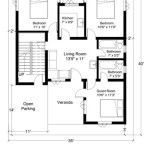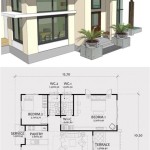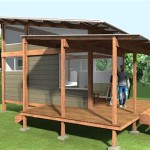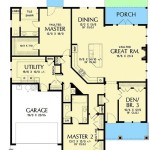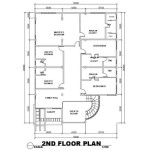Design Your Own Home Floor Plan Free
Crafting a personalized home starts with envisioning the floor plan. While professional architectural services offer tailored solutions, numerous free resources empower individuals to design their own home floor plans. These tools range from basic sketching software to more sophisticated 3D modeling programs, enabling users to experiment with layouts, spatial relationships, and aesthetic features. Understanding the capabilities and limitations of these free options is crucial for effectively leveraging them in the design process.
The aspiration to design one's own home floor plan often stems from a desire for control over the living space, reflecting personal needs and lifestyle. Pre-designed plans may not always accommodate specific requirements, such as the need for a dedicated home office, a larger kitchen, or accessibility features. Free floor plan design tools offer a flexible alternative, allowing homeowners to iterate on different configurations and explore various design ideas without incurring significant costs. However, these tools are primarily intended for conceptualization and preliminary planning. It is essential to consult with qualified professionals, such as architects and structural engineers, to ensure the design complies with building codes and is structurally sound for construction.
Free Floor Plan Design Software: Overview and Features
The digital landscape offers a diverse array of free floor plan design software, each with its own strengths and weaknesses. These platforms generally provide users with a virtual environment where they can draw walls, add doors and windows, and arrange furniture. The interface simplicity and available features determine the user-friendliness and overall effectiveness of each program.
Some popular free options include web-based applications that run directly in a browser, eliminating the need for software installation. These platforms often feature drag-and-drop functionality, making it easy to add pre-designed elements to the plan. Users can typically adjust dimensions, modify wall thicknesses, and experiment with different layouts. Many of these tools also offer basic 3D visualization, allowing users to get a sense of the spatial arrangement of the rooms.
Dedicated desktop software, while requiring installation, may offer more advanced features and greater precision. These programs often provide a wider range of customization options, allowing users to fine-tune details such as lighting, materials, and textures. Some even incorporate features for calculating square footage and estimating material costs. However, these programs may require a steeper learning curve and may not be as accessible as web-based applications.
Irrespective of the platform chosen, it is important to consider the file format compatibility. The ability to export the floor plan in a widely supported format, such as DWG or PDF, is essential for sharing the design with contractors, architects, or other stakeholders. The availability of online tutorials and support resources can also significantly enhance the user experience, particularly for those who are new to floor plan design.
Essential Considerations in Free Floor Plan Design
Designing a functional and aesthetically pleasing floor plan requires careful consideration of several key factors. These include spatial relationships, circulation patterns, natural light, and accessibility. Ignoring these elements can result in a poorly designed home that fails to meet the needs of its occupants.
Spatial relationships refer to the way different rooms are connected and how they relate to each other. The arrangement of rooms should promote a logical flow of movement and create a sense of harmony. For example, the kitchen should be located near the dining area for convenient meal service. Bedrooms should ideally be situated away from noisy areas of the house to ensure privacy and quiet for restful sleep.
Circulation patterns refer to the routes people take through the house. These routes should be direct and efficient, avoiding obstacles and bottlenecks. Hallways should be wide enough to accommodate furniture and foot traffic. Consider the flow of movement between different rooms and ensure that the layout facilitates easy navigation.
Natural light is an essential element of any well-designed home. Maximize the amount of natural light that enters the building by strategically placing windows and skylights. South-facing windows will provide the most sunlight, while east-facing windows will capture the morning sun. Consider the orientation of the house and the surrounding landscape when determining window placement.
Accessibility is an important consideration for individuals with disabilities or mobility limitations. Ensure that doorways are wide enough to accommodate wheelchairs or walkers. Provide ramps or elevators where necessary to overcome changes in elevation. Consider incorporating features such as grab bars and adjustable countertops to enhance accessibility.
Beyond these functional considerations, aesthetic elements also play a vital role in floor plan design. Consider the overall style and character of the house. Experiment with different layouts and materials to create a space that reflects personal tastes and preferences. Pay attention to details such as ceiling heights, trim, and moldings to enhance the visual appeal of the design.
Limitations of Free Tools and the Importance of Professional Consultation
While free floor plan design tools offer a valuable resource for visualizing and experimenting with home layouts, they are not without their limitations. These tools are typically intended for conceptual design and preliminary planning, and they should not be used as a substitute for professional architectural services.
One of the primary limitations of free tools is their lack of precision and accuracy. These programs may not provide the level of detail required for construction drawings, and they may not accurately reflect building codes and regulations. It is essential to verify the accuracy of the design with a qualified architect or engineer before proceeding with construction.
Another limitation is the limited range of features and customization options. Free tools may not offer the same level of flexibility and control as professional software. Users may be restricted in their ability to create complex designs or to incorporate specific architectural details. The availability of technical support and training resources may also be limited.
Furthermore, free floor plan design tools typically do not address structural considerations. The design must be reviewed by a structural engineer to ensure that it is structurally sound and can withstand the loads and stresses associated with the building. This is particularly important for homes in areas that are prone to earthquakes, hurricanes, or other natural disasters.
It is strongly recommended that homeowners consult with a qualified architect or structural engineer before proceeding with any construction project. These professionals can provide expert guidance on building codes, structural requirements, and design principles. They can also help to ensure that the design is safe, functional, and aesthetically pleasing.
Architects and engineers possess the specialized knowledge and experience necessary to create detailed construction drawings and specifications. They can also assist with obtaining building permits and coordinating with contractors. Investing in professional architectural services can ultimately save time, money, and frustration in the long run.
In conclusion, while free floor plan design tools can serve as a helpful starting point for visualizing a home layout, they should not be considered a replacement for professional expertise. Engaging qualified professionals is crucial for ensuring the safety, functionality, and compliance of the final design.

Draw Floor Plans With The Roomsketcher App

Design Your Own House Floor Plans Must See This Acha Homes

3d Floor Plans

Floor Plans Learn How To Design And Plan

Create Your Own Floor Plans House Design Interior Plan Programs

3d Home Design Architect For Your Own House Free Planner Homify

Impressive Make Your Own House Plans 1 Design Floor Free Home

3d Floor Plans

19 Design Your Own House Floor Plans Free Plan Layout Bathroom

3d Floor Plans
Related Posts

